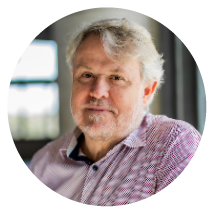Too much, too soon? Does early intervention work in palliative care?
An article written by Dr John Rosenberg, Senior Lecturer, School of Health, University of the Sunshine Coast
The idea of early referral and timely access to the full range of palliative care interventions is well established. Impeccable assessment, holistic care and support of families and carers are the mainstay of the support palliative care gives to individuals and those that care for them.
If we shift our thinking from the individual to the collective, what does ‘early intervention’ mean?
Early intervention at a population level is made up of a range of pre-emptive approaches to mitigate or eliminate the known impacts of ageing, dying, death, grief and caregiving on the health and wellbeing of individuals and communities. These are not ad hoc, but planned and deliberate. They are based in the key action areas of the WHO Ottawa Charter for Health Promotion and are fundamental elements of Public Health Palliative Care (PHPC):
- Build public policies
- Create supportive environments
- Strengthen community action
- Develop personal skills
- Reorient health services.
Over the past 25 years or so of PHPC, it’s become clearer that this is not simply the purview of already-busy palliative care services to ‘do more’ towards these key action areas. Indeed, most palliative care services have said that these actions are beyond their capacity to provide. This is precisely the point, and the message of key action area 5. Reorienting health services to a health promoting approach requires them to shed responsibility for leading – let alone claiming sole possession of – these actions. It is only through equal partnerships with others that these actions can take place and, within them, enable early intervention.
Through collective action by communities, local government and services, public policies can enable early intervention at the population level, by recognising compassion as a collective concern; caregivers and those who are grieving can benefit from a policy platform that promotes their health and wellbeing in situations which it is known that risks are high.
Services know how to create supportive environments for people in their care; what about the wider community? Kinship and social networks are part of this picture to enable early intervention. An Assets Based Community Development (ABCD) approach is well-established in supporting communities to identify their existing – and needed – capabilities for palliative care.
This segues into strengthening community action. Communities that identify, mobilise and benefit from their social capital in caring for their dying citizens are indeed fortunate; where familiarity with the business of dying, death and grief is sought by communities, local palliative care services can be valuable resources for communities to partner with. So too can other allies – funeral companies, grief counsellors, service clubs, and more. Knowing who the ‘activated citizens’ in a community are before they are needed is an element of early intervention.
Developing personal skills is not simply a task for caregivers. ‘Skills’ are broader than that, and a community made up of skilled individuals has a collective capacity to respond to identified need. We see it in the event of natural disasters, accidents and other community incidents – individuals who offer their skills for the greater good. So too could we hope for this for those who are dying, caring and grieving. Death Literacy is invaluable here.
What is increasingly clear is that if palliative care is ‘everybody’s business’ then a whole-of-community view is necessary. These bottom-up, top-down and middle-out approaches are essential to being ready for early intervention in palliative care.
Authors

Dr John Rosenberg
Senior Lecturer
School of Health, University of the Sunshine Coast